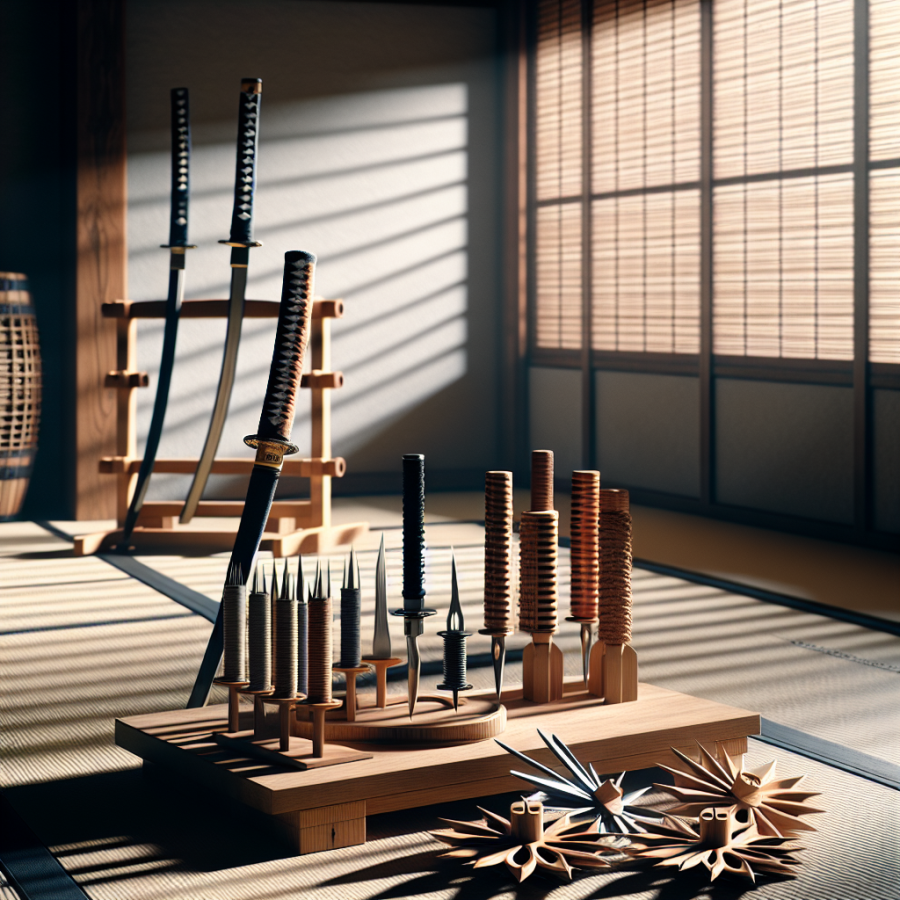Honing Your Throwing Techniques for Deadly Precision
Shurikenjutsu, the traditional Japanese art of throwing shuriken, requires practitioners to refine their skills continually to achieve deadly precision. Honing these techniques not only enhances your accuracy but also ensures efficiency and effectiveness in each throw.
Understanding the Dynamics of Shuriken
To master the art of throwing shuriken, it's essential to grasp the aerodynamics at play. Shuriken can be thrown in several ways; they can spin, fly straight with no rotation, or even be thrown in a boomerang-like fashion. Each method has its unique trajectory and behavior, and understanding these can significantly improve your precision. Spend time experimenting with different throwing techniques to find the ones that best suit your style and the specific situation.
Grip and Release Techniques
The grip is crucial in achieving precision. Many beginners overlook the nuances of gripping a shuriken properly, but it’s the foundation of a precise throw. Practice gripping your shuriken with a balanced force—not too tight and not too loose. The release is just as important; it must be smooth and consistent. Practicing this can mean the difference between hitting your target or missing it entirely.
Stance and Body Alignment
Your stance should offer stability and allow for a full range of motion. Position your feet shoulder-width apart for balanced weight distribution. Align your body with the target; your shoulders, hips, knees, and feet should all be in harmony, creating a straight line toward the target area. A consistent stance forms the basis for repeatable, accurate throws.
Breath Control
Breath control is an often underestimated aspect of precision throwing. Inhale as you prepare and align, and exhale smoothly upon the release. This will help maintain a calm and focused state which is indispensable for accuracy. Proper breathing techniques assist in managing adrenaline and nervousness that may otherwise disrupt your throw.
Concentration and Visualization
The mental aspect of shurikenjutsu cannot be ignored. Before each throw, take a moment to visualize the trajectory and the shuriken hitting the target. This mental rehearsal primes your body to perform the throw correctly. Concentration is key; distractions can lead to a loss of precision. Ensure you are mentally present for each throw, giving it your full focus.
Distance and Angle Practice
Practicing at various distances helps in understanding how the shuriken behaves over different lengths. Start with shorter distances to build confidence and gradually increase your range.
Read also:
Mastering the Ice: An In-depth Exploration of the World of Hockey
The Ninja's Arsenal: Selecting and Maintaining the Perfect Shuriken
Shurikenjutsu, the art of using the shuriken, is an essential skill in the ninja's repertoire. To master this discipline, one must not only perfect the techniques of throwing but also become adept in the selection and maintenance of the shuriken itself. The shuriken, often referred to as a throwing star or ninja star, is more than just a weapon; it is an extension of the ninja's intent, precision, and skill.
**Selection of the Shuriken**
When it comes to selecting the perfect shuriken, there are several factors to consider. The first is the type of shuriken. There are two main types: bo shuriken, which are straight and spike-like, and hira shuriken, which are the more recognizable star-shaped variety. Each type has its own advantages: bo shuriken are typically easier to conceal and carry, whereas hira shuriken have multiple points and can be more intimidating to opponents.
The weight and balance of the shuriken are crucial for effective throwing. A well-balanced shuriken will rotate smoothly through the air and is more likely to hit the target accurately. The weight affects the throw's range and impact; heavier shuriken can be thrown over longer distances and have more stopping power, but require more strength and practice to use effectively.
Material is another important criterion. Historically, shuriken were made from a variety of materials, including iron and steel. Today, they can also be found in modern materials such as stainless steel and titanium. Each material has its own properties: steel is durable and maintains sharp edges well, whereas titanium is lighter and resistant to corrosion.
Size and design should also be suited to the individual ninja's hand size and throwing style. Some practitioners prefer smaller shuriken for quick, close-range throws, while others might opt for larger ones for longer distances or for a more psychological effect on the adversary.
**Maintenance of the Shuriken**
Maintenance is key to ensuring that the shuriken is always ready for use. Regular inspection is necessary to check for any nicks, bends, or rust that could affect performance.
Cleaning the shuriken after each practice session or use is essential to maintaining its condition. Wiping it down with a clean cloth and some oil will protect it from the elements and prevent rust, especially if the shuriken is made of a material prone to oxidation.




